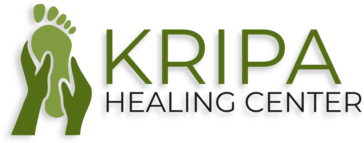WHAT IS REIKI?
Reiki is a Japanese energy healing technique that promotes physical, emotional, and spiritual well-being. Practitioners act as channels for life force energy, transferring it to recipients through their hands. By rebalancing the body’s energy centers, Reiki aims to reduce stress, promote relaxation, and support the body’s natural healing processes. Recipients typically lie down fully clothed during a session, and the experience can vary but often includes sensations of warmth and relaxation. Reiki is complementary to conventional medical treatments and focuses on overall well-being rather than specific diagnoses or cures.
WHY ONE SHOULD TRY REIKI?
Reiki offers several potential benefits, including relaxation and stress reduction, energy balance and revitalization, support for physical and emotional healing, pain management, emotional and spiritual well-being, and self-care and personal growth. It promotes deep relaxation, rebalances energy flow, and complements conventional medical treatments. Reiki can enhance overall well-being, provide pain relief, and support emotional clarity and personal development. It is a holistic healing modality that focuses on relaxation, energy balance, and self-care.
ARE THERE DIFFERENT FORMS OF REIKI?
There are various kinds of Reiki that have emerged over time, each with its own techniques and approaches. Some examples include Usui Reiki, Tibetan Reiki, Karuna Reiki, Seichim Reiki, Kundalini Reiki, and Animal Reiki. These different systems incorporate diverse elements, such as symbols, mantras, and specific focuses, while maintaining the fundamental principles of channeling universal life force energy for healing and balance. Each system aims to promote well-being and spiritual growth, but they may emphasize different aspects and techniques within the Reiki practice.
WHAT CAN YOU EXPECT FROM A REIKI SESSION?
During a Reiki session, you can expect a relaxing environment with soft music and dim lighting. You remain fully clothed throughout the session, and the practitioner will either place their hands on or slightly above specific areas of your body. Sensations such as warmth, tingling, and relaxation are commonly reported. Reiki promotes deep relaxation, reduces stress, and can lead to personal insights and emotional release. Sessions typically last around 55 minutes, and it’s important to rest and reflect afterward. Individual experiences may vary, so it’s best to approach Reiki with an open mind and without specific expectations.
CAN I LEARN REIKI MYSELF?
Yes, it is possible to learn Reiki and practice it on yourself. Here are the steps to get started:
1. Find a qualified Reiki teacher who resonates with you.
2. Choose a Reiki level that suits your needs, starting with the first level for self-healing and practicing on others.
3. Receive attunements from your Reiki teacher to open and align your energy channels.
4. Learn the techniques and symbols associated with each Reiki level.
5. Set aside dedicated time for self-treatment in a quiet and comfortable space, following the techniques and hand positions taught during your training.
6. Continuously educate yourself through workshops, Reiki shares, practice groups, books, and ongoing practice. Remember to seek guidance from an experienced Reiki teacher for proper training and understanding of the principles and techniques. They can provide personalized support and help deepen your connection with Reiki.






Reviews
There are no reviews yet.